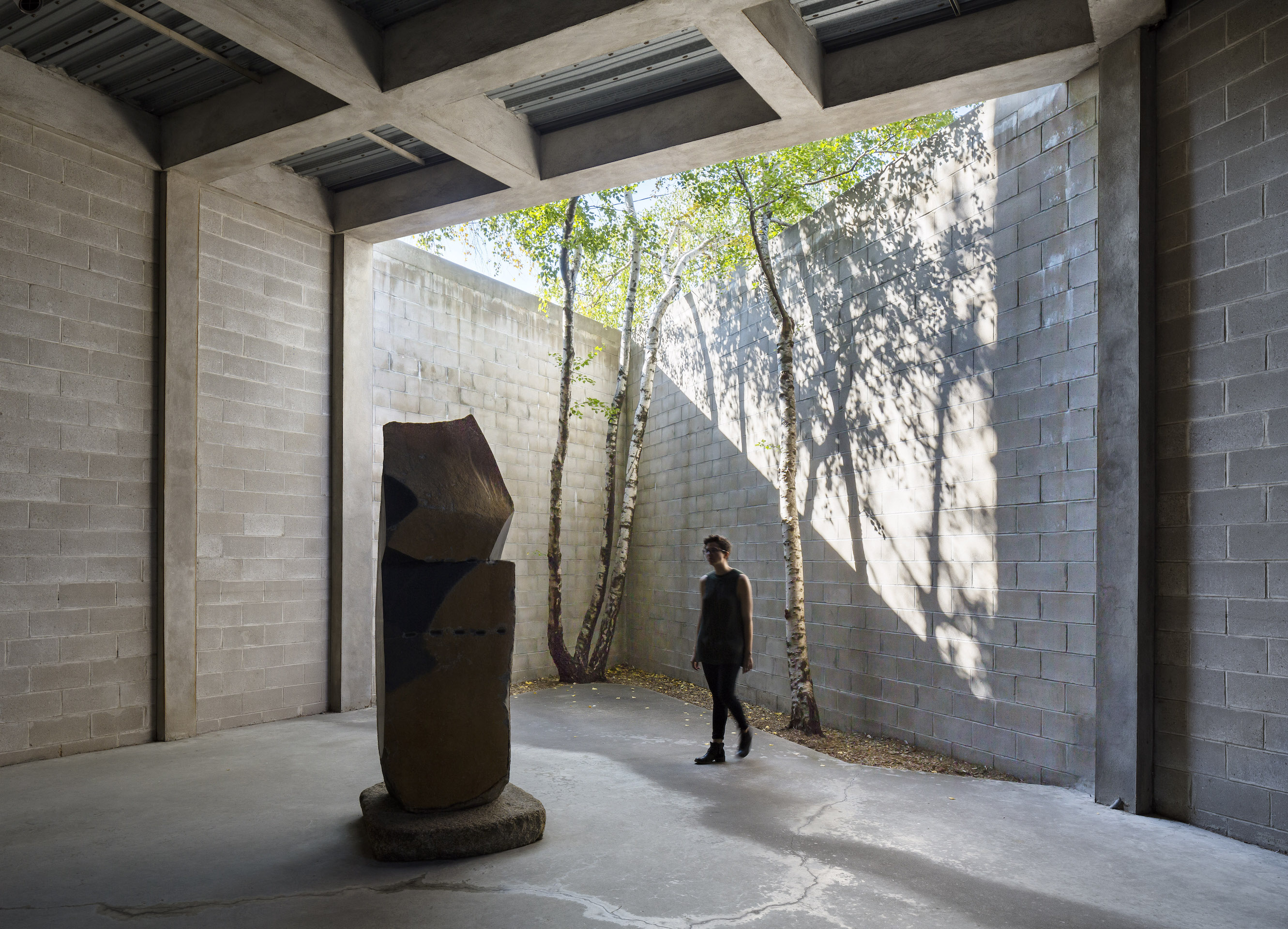

Above photo: Nicholas Knight. ©The Isamu Noguchi Foundation and Garden Museum / Artists Rights Society (ARS)
“A museum is, I suppose, a repository against time. Fragile objects need protection but even without this need there is a semblance of eternity, a sense of permanence that is implied by a museum, and a removal from time’s passage. Is it the enclosure, roofed or unroofed, that creates this impression?” - Isamu Noguchi
Standing in for its physical location at 9 33rd Road, the website of the Noguchi Museum is able to faithfully distil some of the building’s qualities into a digital shadow. Ample white space surrounds sans-serif typography (Helvetica, perhaps a reference to the height of Noguchi’s career in the mid-twentieth century), and the most important aspects of the museum are reduced to clickable categories: “Isamu Noguchi / Museum / Artworks / Akari and Shop.” A few images of Noguchi’s works are visible in tiny boxes on the home page, but liquid crystals are a poor substitute for real granite and basalt. And what is unique about the Noguchi Museum is its lack of boxes—offering instead intimacy with his works, rather than enclosing them in cubic vitrines.
But it’s nearly impossible to box in Noguchi’s large-scale works anyway, being made from materials like steel, marble, iron, wood, bronze, aluminium, basalt, granite, and even running water. Though Noguchi’s output ranged from furniture and lighting design to architecture and set designs, the root of all his work is in sculpture. The museum is a resting place for many of Noguchi’s works (as well as his archives) and was designed and established by Noguchi himself in 1985. It is a testament to both his artistic and architectural prowess. Noguchi converted a triangular city block into a sanctuary for both his sculptures and his visitors, and being some distance from the nearest subway stop, the act of travelling to the museum evokes a pilgrimage to a remote refuge. One even seems to be tracing the steps of Noguchi himself, who moved his studio to Queens in 1974 to escape the rush and rumble of downtown Manhattan.
When transforming the building that would become the museum, Noguchi retained much of the original structure, such as its steel and wood beams and ageing patina. These elements echo and converse with the materials, forms, and natural earth tones of the sculptures themselves. As it stands, the museum features an outdoor garden and a number of large and small galleries tucked inside a two-story red brick building that seems almost too small from the outside to contain everything that’s within.


Upon entering, one is met with the indoor/outdoor gallery in which Noguchi’s large-scale basalt sculptures are installed. A few skinny birch trees contrast the gargantuan stone pieces, which invite close investigation of their material and idiosyncrasies.

The first floor contains Noguchi’s basalt and granite works, which are displayed in a wide, low-ceilinged room peppered with support beams. There are also smaller, intimate galleries here, with windows that cast rectangles of yellow light onto pieces Noguchi, installed in the 1980s.

Upstairs, the second-floor galleries host long-term rotating exhibitions and display pieces from the archive.
The floating galleries, so-called because they “float” above the sculpture space on the first floor, feature huge skylights and windows that face out onto Vernon avenue. Natural light pours in and reflects off of white gallery walls, highlighting every nook of the smaller sculptures that are displayed there.

Lastly, the garden. Influenced by Noguchi’s work in Japanese garden design, the small outdoor space is filled with flora native to the East Coast. Paper birch trees watch over sculptures, which are dotted along a few winding paths laid between grass and stone. If the Noguchi Museum is a sanctuary, then this is the inner sanctum, a locus of peace in a city that is usually far from tranquil.
Looking out into my own minuscule, urban back garden, I am writing this far from the Noguchi Museum, reminding myself of the place through images drawn from the institution’s website. This is what many of us now do—we rely on digital photos and videos of the places in which we find refuge in the absence of being able to visit museums in person. But a site is not a space, and the Noguchi Museum exemplifies how the digital falls short in delivering a corporeal experience of art. The weight and dynamism of Noguchi’s sculptures cannot be captured in an image. Though this is what I present here, pixel words and images, I hope, for everyone, that we may someday soon be allowed to visit the museums in which we dwell and retell histories.
* * *

Anna Talley is a researcher, writer, and design historian. She holds a BFA in Art and Design History from the Pratt Institute and is currently earning her MA in Design History and Material Culture at the V&A/ Royal College of Art. She is interested in the curation of modern and contemporary design and has worked in the curatorial departments of the Metropolitan Museum of Art, the Cooper Hewitt Smithsonian Design Museum, the Museum of Modern Art, and the Victoria and Albert Museum.